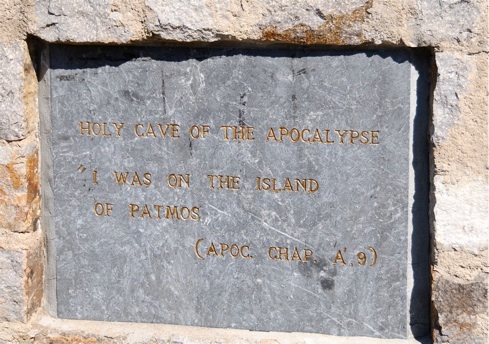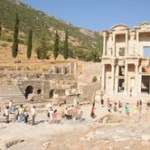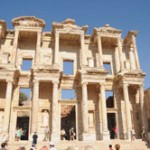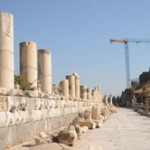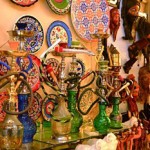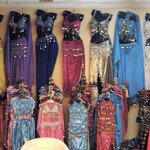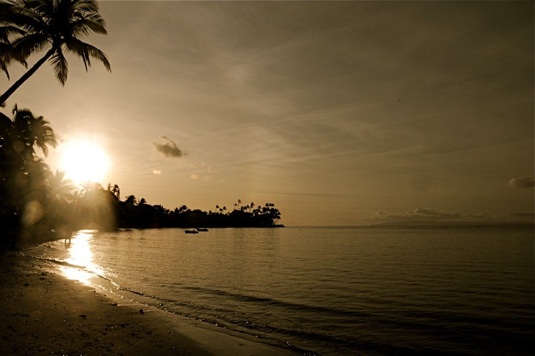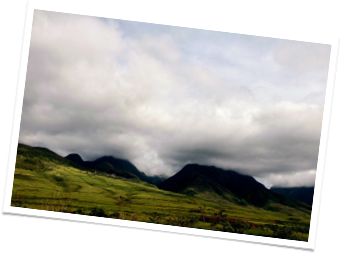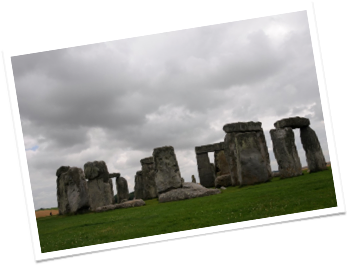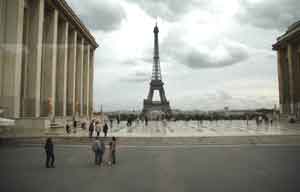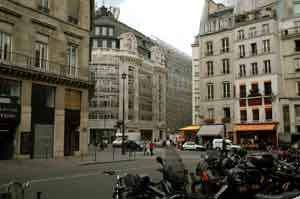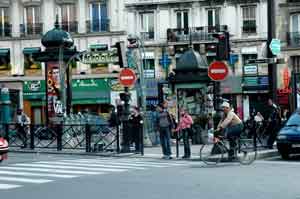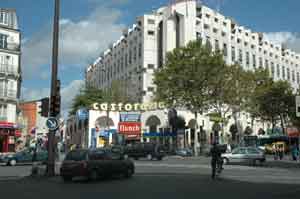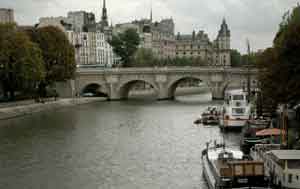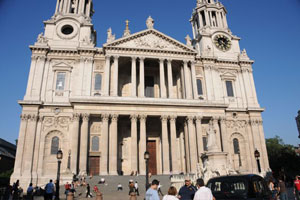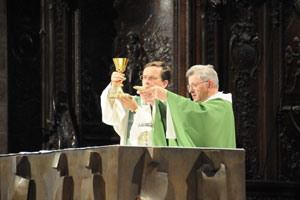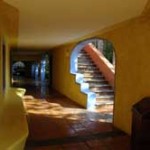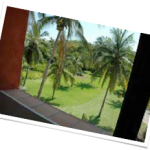Dear Ramai,
You recently asked a most intriguing, but almost absurd question: What is our family religion? Such a question should not even have to be raised, but in the case of our family, alas, it must be asked and I will do my best to answer. Let me first provide some personal religious history, which will put the issue into context.
I was born an Anglican. In Canada the Anglican Church, also known as the Church of England, is one of the common protestant churches. The name Anglican is not used in this country, instead the word is Episcopal and so I would be known as an Episcopalian. After the American War of Independence, American Anglicans wanted to drop the “english” connotation suggested by the word Anglican and so adopted the Scottish term, Episcopal, to refer to their new America branch of the Church of England.
Growing up my family was moderately religious. We would go to Church about 2 or 3 times a month. My mother was the more pious of my parents and so she made sure we attended church at least on this basis. My father, at best, was lukewarm to religion, but at least he did not block my mother from taking us to church. My father never talked much about religion so I am not sure, even to this day, what his actual religious leanings are. I suspect there is a streak of atheism beneath his religious silence. He often told me not to wear my religion on my shirt sleeves. Good advice if you ask me, although I have never followed it, especially during my “born again” Hindu days. At any rate I grew up in a church-going family and I was eventually confirmed as a full-fledged member of the Anglican Church.
 In many Christian churches there is a ceremony called Confirmation that most adolescent boys and girls go through to become a full member of their church. Confirmation is somewhat equivalent to the Jewish Bar Mitzvah or the Hindu Upanayana, the thread ceremony that you have undergone. In order to qualify for Confirmation my brother and I had to attend a certain number of religious classes and so my mother took the extra efforts to bring us to these classes. At the time of the ceremony a bishop, a high church official, came to our family church, Saint Timothy’s, and performed the Confirmation in a ceremony that involved the “laying on of hands.” The gesture of the bishop placing his hands over our heads as we bowed before him is symbolic of Christ touching the heads of his disciples. It is an act of blessing and an indication of the discipular succession (parampara) from Christ to his apostles and eventually down a line to the Archbishop of Canterbury and ultimately to my brother and I. The Archbishop of Canterbury is the “pope” for the Church of England. Afterwards we were considered full members of the Church of England and were allowed to participate in the Eucharist or communion service. I can, therefore, definitely say that growing up my family religion was Christian Protestant Anglican. Sometimes I wish I could say something as simple as this for you, Ramai, but you live in religiously unique situation. You are a generation in transition.
In many Christian churches there is a ceremony called Confirmation that most adolescent boys and girls go through to become a full member of their church. Confirmation is somewhat equivalent to the Jewish Bar Mitzvah or the Hindu Upanayana, the thread ceremony that you have undergone. In order to qualify for Confirmation my brother and I had to attend a certain number of religious classes and so my mother took the extra efforts to bring us to these classes. At the time of the ceremony a bishop, a high church official, came to our family church, Saint Timothy’s, and performed the Confirmation in a ceremony that involved the “laying on of hands.” The gesture of the bishop placing his hands over our heads as we bowed before him is symbolic of Christ touching the heads of his disciples. It is an act of blessing and an indication of the discipular succession (parampara) from Christ to his apostles and eventually down a line to the Archbishop of Canterbury and ultimately to my brother and I. The Archbishop of Canterbury is the “pope” for the Church of England. Afterwards we were considered full members of the Church of England and were allowed to participate in the Eucharist or communion service. I can, therefore, definitely say that growing up my family religion was Christian Protestant Anglican. Sometimes I wish I could say something as simple as this for you, Ramai, but you live in religiously unique situation. You are a generation in transition.
As a child and youth, church attendance was not something that I enjoyed. I did it because I had to. However, from my earliest days I have always had faith in God and a strong religious nature. As odd as this may seem, I am not a pious person, nor have I ever been so, but in spite of this I maintain my religious nature and my faith in God. You can read my views on God in the installment, “Radhika’s Question.” I would say that I am more heterodox than orthodox, but I leave that for you decide.
By age twelve I became increasingly conscious of religious matters and began to have serious problems with Christianity. I disliked the idea that only Christians were on the path to God and that the followers of other religions were condemned to something less. The exclusivity of Christianity made me doubt whether Christianity could ever be my life long religion. There were other issues, but this single Christian teaching bothered me the most. Why would God be so limited to not include members of other faiths?
As a result I entered the spiritual “supermarket” and began to study and experiment with other religions. I read the Old and New Testaments, the Qur’an, the Lotus Sutra and other Buddhist works, books on yoga, philosophy, and psychology and to the best of my youthful ability I even read Plato, Aristotle, and the Greek myths. I read virtually every book on religion, philosophy and psychology that I could get my hands on. In those days I had an insatiable appetite for the “Truth.” Such intense reading went on between the ages of 12 and 18. But ultimately it was Hinduism and the Bhagavad-gita that had the greatest impact on me and eventually led me to Krishna Consciousness. I pride myself for having read the Gita well before I had any experience with Krishna Consciousness. In fact I had read Prabhupada’s Gita, the abridged Macmillan “blue” Gita, without knowing that is was the “Hare Krishna” Gita. You can read the details of how I actually came to Krishna Consciousness elsewhere on this site, but the important point is that even thought I joined Krishna Consciousness at a relatively early age and stayed for two decades, it was not something that I could ultimately sustain for life. Krishna Consciousness is not my religion nor is it our family religion. Today I look at Krishna Consciousness as my mother. I love my mother, but I am not going to live at home with my mother anymore.
Krishna Consciousness is a variety of Vaishnavism that I consider “born again” religion. It is religious fundamentalism, Hindu style. From about 1969 when I was 17, until 1989 when I was 36 I lived in Krishna Consciousness and had you asked me the question, “What is my religion?” I would have told you that Krishna Consciousness was my religion. This, of course, is not technically correct because Krishna Consciousness is just a particular branch of Bengal Vaishnavism, which is part of Hinduism. I suppose that if I was asked this question by a hospital administrator, just to make things simple, I would have said that my religion was Hinduism. But certainly I did not feel that I was Hindu. I was Krishna Conscious.
The years between 1985 and 1988 were critical. Cracks were appearing in the mantle of Krishna Consciousness with the advent of internal ISKCON strife and even criminality that was appearing within New Vrindavan. You can also read about this on this site. During this time I made two important trips to India with Gaura Keshava. I took initiation as a Shri Vaishnava and I translated Bhaktivinoda’s autobiography, Svalikhita Jivani. I will write about these events separately, suffice to say that the combined effect had a monumental effect on my life. During this same time, your mother left us, we married your step mother and then together the family left New Vrindavan and moved to Berkeley California. It was a turbulent time! After leaving New Vrindavan and suffering from depression, disillusion and disappointment I slowly moved away from Krishna Consciousness and into the greater world of Shri Vaishnavism and ultimately into Hinduism. So what is our family religion? Is it Shri Vaishnavism or Hinduism?
The matter is still more complicated because the family is religiously split. Being the son of your mother and living at a time when we were within the Hare Krishna movement, you and your direct bothers and sisters have one kind of religious upbringing, a strict “born again” Vaishnavism, some would say a cult upbringing. You lived in an ashrama, you grew up with a shaved head and you attended Gurukula. But what about the children of the second family, your sisters? They have no experience of Krishna Consciousness, instead their religious upbringing is more Hindu because they grew up at a time when our family was deeply connected with the Hindu Temples of Southern California. You, of course, know this history, but did you know that a few years ago I purposefully pulled the family away from the temple because of the adolescent antics of Keshava and Karnamrita? I did not want their activities to affect my position as a priest in the temple. It is a true but unfortunate fact that members of a congregation expect their priest to be “perfect.” A priest is barely allowed to be human. Indeed he is public property. This naturally curtailed the family’s religious involvement with Hinduism. In fact you, in the first family, actually have more claim to a family religion than they do.
Ramai, the matter is still more complex.  When I was growing up, religion was a preoccupation for me. I was on a quest for “the meaning of life” and I took it seriously. Consequently, I joined a “hot” religion like Krishna Consciousness and lived through the discipline and experiences of that way of life. But as I have described elsewhere, it was a “box,” a place that strictly controlled how I lived and thought. It served its purpose, but like a chick who has left the nest, it is not a place that I can return to. From my perspective all religions are boxes where people put their lives. Some may be bigger boxes than others, some may be better suited to “normal” life, but they are boxes none the less. So I personally can never go back and live in a box, any box, and I know Sukulina feels the same. In other words, I do not think you will ever get a family religion out of us. We both have lived so intensely as devotees and as a professional family of priests, we have been so close to the fire for so long, that neither of us will ever be able to provide you with a family religion. And let me tell you something more. Having studied religion academically to the extent of getting a doctorate, I have had all of the walls of religion torn down. Nothing of religion is intrinsically sacred to me. When you study religion deeply, especially comparative religion, you learn that it is human beings that create the sacred, it is human beings that create absolutes, it is human beings that create the walls of religion. I have been so trained that I can move back and forth, inside and outside the walls of religion, any religion, with total ease. I know how permeable these walls are. This is why I can move within the walls of Hinduism and function as a priest and then the next moment step outside this theological circle and teach as a religious outsider. It is impossible for me to take the walls of any religion as absolute. I have few taboos left and so I can have no personal religion that I take as absolute.
When I was growing up, religion was a preoccupation for me. I was on a quest for “the meaning of life” and I took it seriously. Consequently, I joined a “hot” religion like Krishna Consciousness and lived through the discipline and experiences of that way of life. But as I have described elsewhere, it was a “box,” a place that strictly controlled how I lived and thought. It served its purpose, but like a chick who has left the nest, it is not a place that I can return to. From my perspective all religions are boxes where people put their lives. Some may be bigger boxes than others, some may be better suited to “normal” life, but they are boxes none the less. So I personally can never go back and live in a box, any box, and I know Sukulina feels the same. In other words, I do not think you will ever get a family religion out of us. We both have lived so intensely as devotees and as a professional family of priests, we have been so close to the fire for so long, that neither of us will ever be able to provide you with a family religion. And let me tell you something more. Having studied religion academically to the extent of getting a doctorate, I have had all of the walls of religion torn down. Nothing of religion is intrinsically sacred to me. When you study religion deeply, especially comparative religion, you learn that it is human beings that create the sacred, it is human beings that create absolutes, it is human beings that create the walls of religion. I have been so trained that I can move back and forth, inside and outside the walls of religion, any religion, with total ease. I know how permeable these walls are. This is why I can move within the walls of Hinduism and function as a priest and then the next moment step outside this theological circle and teach as a religious outsider. It is impossible for me to take the walls of any religion as absolute. I have few taboos left and so I can have no personal religion that I take as absolute.
I am not sure how this sounds to you. When I state that my walls have been torn down and I have no personal religion, this does not mean that I have no faith. It just means that my way of being religious is radically different from the way most people understand and need religion to be. My personal views on religion are extremely simple and you can find them in the installment, “This is my Religion” also on this site. Boil it down, life is a wondrous mystery and beauty. Life is my religion and the universe is my temple. But never forget: when I speak in this way I have a lifetime of religious discipline behind me that is both practical and academic. Mystery and beauty as a religion may sound good, but it hardly fulfills the needs of people. Most people want the walls of religion to be impermeable. People need the discipline of religion and they need a church or a temple with rules. People want to feel secure. How strange it is that as a priest I can give religion to the world and yet as a father I can not give religion to my family!
In spite of this, I recognize the importance of boxes and walls for most people and especially for young people with families. I think having a religion is important. Life is a mystery and a beauty, and religion is an important way to relate to this mystery and beauty. I just do not think your mother or I can honestly give you a family religion, and even if we could, I do not think we want to. The biggest box we have found is Hinduism, but the way it is practiced in temples is necessarily as a small box. This unfortunately is the way of all religions. Plus with Hinduism there is an ethnic factor that you may not be comfortable with, and if you go to a Western based Hindu group such as ISKCON then you have the cult factor to deal with. So you will have to choose for yourself. Being a spiritual pioneer is not easy and being the son or daughter of spiritual seekers is also not easy. You certainly chose a difficult family, but now you have a wonderful opportunity: you can choose without restrictions how you wish to live and what your religion will be. According to your nature I suggest that you enter the spiritual supermarket and as I did explore a few religions. See what they can teach you. Choose science if you wish, it can also show you mystery and beauty.
*Photograph by Malati Marvin

